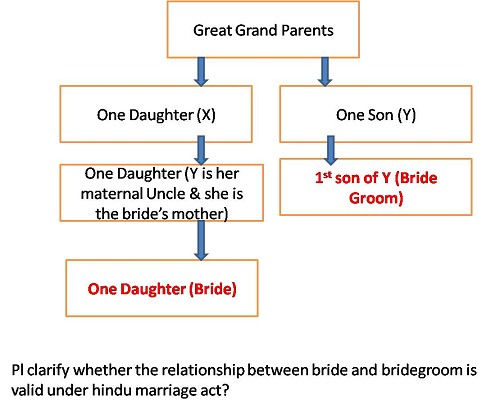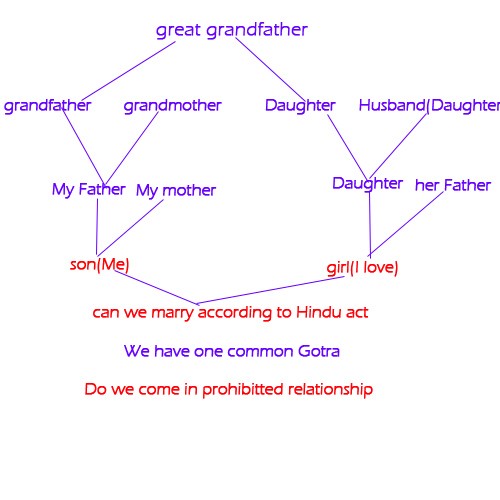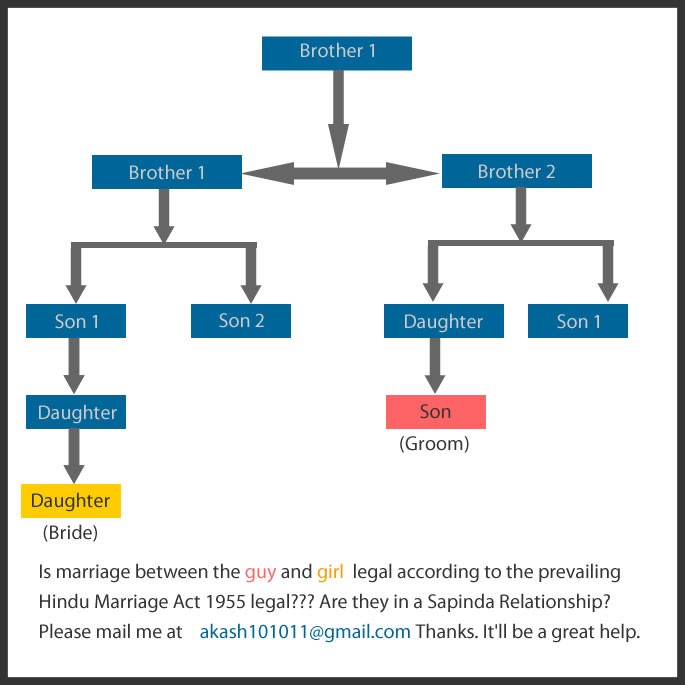The Hindu Marriage Act, 1955
HINDU MARRIAGES
5. A marriage may be solemnized between any two Hindus, if the following conditions are fulfilled, namely:-
(iv) The parties are not within the degrees of prohibited relationship unless the custom or usage governing each of them permits of a marriage between the two;
(v) The parties are not sapindas of each other, unless the custom or usage governing each of them permits of a marriage between the two.
Sec 2. (f)
(i) "sapinda relationship" with reference to any person extends as far as the third generation (inclusive) in the line of ascent through the mother, and the fifth (inclusive) in the line of ascent through the father, the line being traced upwards in each case from the person concerned, who is to be counted as the first generation;
(ii) Two persons are said to be "sapindas" of each other if one is a lineal ascendant of the other within the limits of sapinda relationship, or if they have a common lineal ascendant who is within the limits of sapinda relationship with reference to each of them;
(g) "degrees of prohibited relationship"-two persons are said to be within the "degrees of prohibited relationship"
(i) If one is a lineal ascendant of the other; or
(ii) If one was the wife or husband of a lineal ascendant or descendant of the other ; or
(iii) If one was the wife of the brother or of the father's or mother's brother or of the grandfather's or grandmother's brother of the other; or
(iv) if the two are brother and sister, uncle and niece, aunt and nephew, or children of brother and sister or of two brothers or of two sisters ;
Explanation.-For the purposes of clauses (f) and (g), relationship includes-
(i) relationship by half or uterine blood as well as by full blood;
(ii) illegitimate blood relationship as well as legitimate; (iii) relationship by adoption as well as by blood ; and all terms of relationship in those clauses shall be construed accordingly.
The marriage already a void marriage, if the relationship exist as brother and sister.














